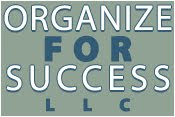Saying "yes" to doing one thing is inherently saying "no" to doing something else, which means the opposite is true, too... Saying "no" to activities that don't really excite us is imperative for making time to do what matters most. Yet, for the many of us who enthusiastically pursue many different passions, learning how and when to say no might be the most difficult lesson possible.
When figuring out how to make saying no work best for your specific needs in boosting productivity, keep the following in mind:
- Think of all that's possible. Consider what you would do if you could rather than what you feel like you should do. As Americans, we tend to should all over ourselves, whether from peer pressure or from within, and, as adults, our shoulds can become barriers. It is our most basic need, craving, ideal, calling or passion that we must make time for doing, which is very different from caving into what we should do. Instead of saying "should", try "could" and, then, choose the possible path that reflects your own priorities and the fire within you.
- Listen to your gut. Often, our bodies know what we really want to do. We might suppress the pull in that direction because it would involve challenges or conflict with others; yet, we're better off if we don't ignore the wisdom of our bodies. When we try to silence the messages from our guts, it can frequently lead to stress-induced health problems, like diminished immunities that make us more susceptible to viral infections. If you feel stress at the thought of saying yes, go with no; alternatively, if you are excited about both yes and no, go with the option that elicits stronger feelings of excitement.
- Take what time you need to decide. If you don't feel passionately either way when immediately asked, take time to think. Maybe it's a few minutes; maybe it's a few days. Your needs will vary over time so sit with the available options to see what works best for you at that point in life. Reflect on your options, research the pros and cons of each, seek advice and let your gut marinate on how each option best resonates with you. When you are committing your time to doing something, you want to make sure you like the commitment and have the time available to do it as well as you'd like it done.
- Saying no doesn't require being mean. As the majority of communication comes from non-verbals, try to pair declining an invitation with a smile or, at least, a warm, welcoming expression on your face. Then, choose your words wisely. Start with a positive statement, like "I would love to..."; include a transition word, like "but" or "however". If possible, end with a bit of rationale as to why not taking advantage of the opportunity being presented is actually better for you, your goals and your current bandwidth. If what you are declining is a request for help, substitute that with an explanation of how another alternative would be more helpful for that person or organization. For example, when relatives invite themselves to your home over the holidays, you can respond by saying, "It would be great to see you, but it is hard on my body to have guests stay over; plus, there is a nearby hotel with excellent service who can make your stay extra special. It will make having dinners together even more meaningful and enjoyable." Saying no with grace and authority is a win-win for everyone!
- Utilize "no" as a tool for staying on track. When you simplify commitments, minimize meetings, add in buffers and create white space on your calendar, you are able to give your best to what earns a spot in your schedule and focus more on what matters most. Create a weekly strategy to address your priorities; then, use that game plan to ward off time stealers and others' priorities. Knowing where you're headed helps in getting there, and saying no to detractors makes the pathway to success run more efficiently, making you more productive.


No comments:
Post a Comment